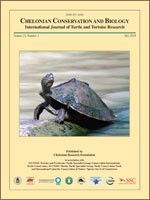Mojave desert tortoises (Gopherus agassizii) have been translocated for decades, and research-oriented translocations recently have been recommended as a tool to help recover this threatened species. However, avoiding negative genetic impacts from wildlife translocations has been widely cautioned. Populations of the Mojave desert tortoise within a 200–276-km straight-line radius of each other (249–308 km measured around topographic barriers) tend to be genetically correlated and may be considered single genetic units for management purposes. When planning translocations among wild populations, releasing tortoises at recipient sites within a straight-line distance of 200 km from the source population would most conservatively maintain historic genetic population structure. However, the risk of causing outbreeding depression by inadvertently translocating Mojave desert tortoises between more distant populations or those of unknown provenance is low.
How to translate text using browser tools
1 July 2014
Translocation Relative to Spatial Genetic Structure of the Mojave Desert Tortoise, Gopherus agassizii
Roy C. Averill-Murray,
Bridgette E. Hagerty
ACCESS THE FULL ARTICLE

Chelonian Conservation and Biology
Vol. 13 • No. 1
July 2014
Vol. 13 • No. 1
July 2014
genetic provenance
outbreeding depression
population structure
Reptilia
Testudines




